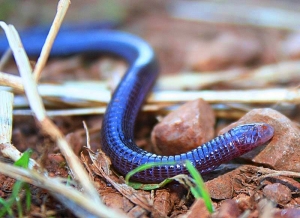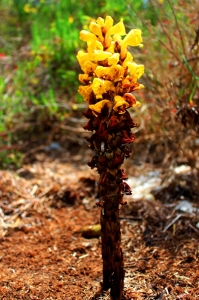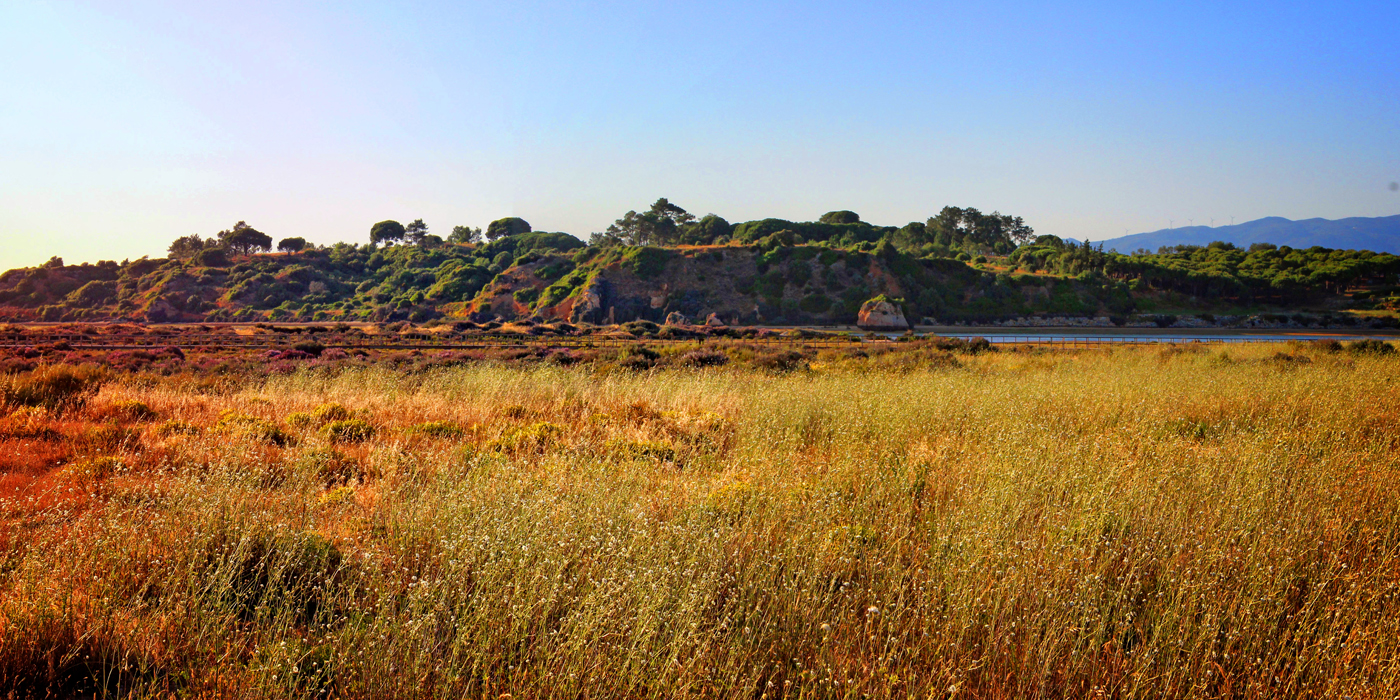• Greater Flamingo (Phoenicopterus roseus) resident 1)
• Cattle Egret (Bubulcus ibis) resident 2)
• Caspian Tern (Sterna caspia) Aug.-Mar. 3)
• Stone-curlew (Burhinus oedicnemus) resident 4)
• Hoopoe (Upupa epops) resident 5)
• Black Tern (Chlidonias niger) rare; summer 6)
• Bee-eater (Merops apiaster) Mar.-Sep. 7)
• Iberian Azure-winged Magpie (Cyanopica cooki) resident 8)
• Kentish Plover (Charadrius alexandrinus) resident 9)
• Bluethroat (Luscinia svecica) Jan. -Mar. / Aug. -Dec. 10)
• Crested Lark (Galerida cristata) resident 11)
• Black-winged Stilt (Himantopus himantopus) resident
• Sandwich Tern (Sterna sandvicensis) resident
• Black Kite (Milvus migrans) Mar.-Aug.
• Alpine Swift (Tachymarptis melba) Mar.-Sep.
• Oystercatcher (Haematopus ostralegus) resident
• Melodious Warbler (Hippolais polyglotta) Apr.-Sep.
• Woodchat Shrike (Lanius senator) Mar.-Sep.
• Sardinian Warbler (Sylvia melanocephala) resident
• Dartford Warbler (Sylvia undata) resident
• Iberian Chiffchaff (Phylloscopus ibericus) Feb. -Sep.
• Wood Sandpiper (Tringa glareola) Mar. -Apr. /Aug. -Sep.
• Little Stint (Calidris minuta) Sep.-Feb.
PLEASE NOTE: this list is not extensive
•—- Blackcap: Sylvia atricapilla; •—- Black Redstart: Phoenicurus ochruros ; •—- Bar-tailed Godwit: Limosa lapponica; •—- Black-headed Gull: Larus ridibundus; •—- Black-tailed Godwit: Limosa limosa; •—- Cetti’s Warbler: Cettia cetti; •—- Corn Bunting: Emberiza calandra; •—- Dunlin: Calidris alpina; •—- Eurasian Jackdaw: Corvus monedula ; •—- Eurasian Reed-warbler: Acrocephalus scirpaceus; •—- European Robin: Erithacus rubecula; •—- Garden Warbler: Sylvia borin; •—- Great Cormorant: Phalacrocorax carbo; •—- Grey Heron: Ardea cinerea; •—- Grey Plover: Pluvialis squatarola; •—- Kestrel:Falco tinnunculus; •—- Knot: Calidris canutus; •—- Little Egret: Egretta garzetta; •—- Little Owl: Athene noctua; •—- Little Tern: Sterna albifrons; • —- Northern Wheatear: Oenanthe oenanthe ; •—- Peregrine Falcon: Falco peregrinus ; •—- Pied Flycatcher: Ficedula hypoleuca; •—- Redshank: Tringa totanus; •—- Ruddy Turnstone: Arenaria interpres; •—- Ringed Plover: Charadrius hiaticula; •—- Sanderling: Calidris alba; •—- Spotted Flycatcher: Muscicapa striata; •—- Whimbrel: Numenius phaeopus; •—- White Wagtail: Motacilla alba; •—- Yellow-legged Gull: Larus michahellis; •—- Yellow Wagtail: Motacilla flava;
 Iberian Worm Lizard (Blanus cinereus): most members of the worm lizard family (Blanidae) occur in Africa and in the Caribbean Islands; this species, however, is yet another curious Iberian endemism, a small and slow moving lizard with slender, limbless and ringed body. It is a quite primitive animal, even for a reptile. Despite being a subterranean dwelling species, it is not that infrequent to spot it above ground searching for a better place to prey on ants and other tiny invertebrates. Image: Mario Modesto
Iberian Worm Lizard (Blanus cinereus): most members of the worm lizard family (Blanidae) occur in Africa and in the Caribbean Islands; this species, however, is yet another curious Iberian endemism, a small and slow moving lizard with slender, limbless and ringed body. It is a quite primitive animal, even for a reptile. Despite being a subterranean dwelling species, it is not that infrequent to spot it above ground searching for a better place to prey on ants and other tiny invertebrates. Image: Mario Modesto
 Yellow Broomrape (Cistanche phelypaea): this curious and striking plant has no green in it; there’s no need to have chlorophyll when there is no need to realize photosynthesis. Its special roots (called ‘haustoriums‘) penetrate host plants in order to acquire all the sap and all the nutrients the broomrape demands. That way, all its acquired nutrient supplies are focused on producing a bigger, brighter, and more lavish set of flowers. Reaching up to 45cm / 17.7 inches, these relatively rare parasitic plants occur only in small pockets throughout the Mediterranean basin, where they inhabit some estuaries and salt marshes like the ones found in Alvor or Ria Formosa, further to the east. The Yellow Broomrape prefers to parasitize bushy Goosefoots (Chenopodiaceae). The large, bright flowers make their appearance from February to April and they can be easily seen both in Alvor and in Ludo or Quinta do Lago.
Yellow Broomrape (Cistanche phelypaea): this curious and striking plant has no green in it; there’s no need to have chlorophyll when there is no need to realize photosynthesis. Its special roots (called ‘haustoriums‘) penetrate host plants in order to acquire all the sap and all the nutrients the broomrape demands. That way, all its acquired nutrient supplies are focused on producing a bigger, brighter, and more lavish set of flowers. Reaching up to 45cm / 17.7 inches, these relatively rare parasitic plants occur only in small pockets throughout the Mediterranean basin, where they inhabit some estuaries and salt marshes like the ones found in Alvor or Ria Formosa, further to the east. The Yellow Broomrape prefers to parasitize bushy Goosefoots (Chenopodiaceae). The large, bright flowers make their appearance from February to April and they can be easily seen both in Alvor and in Ludo or Quinta do Lago.
